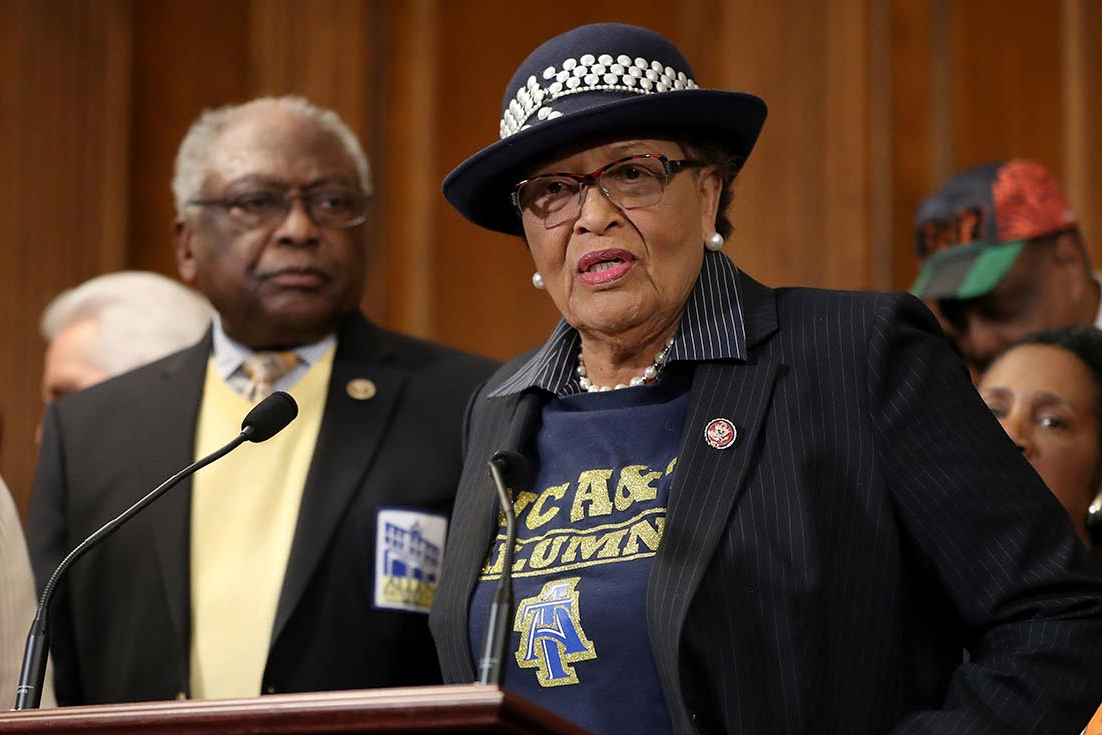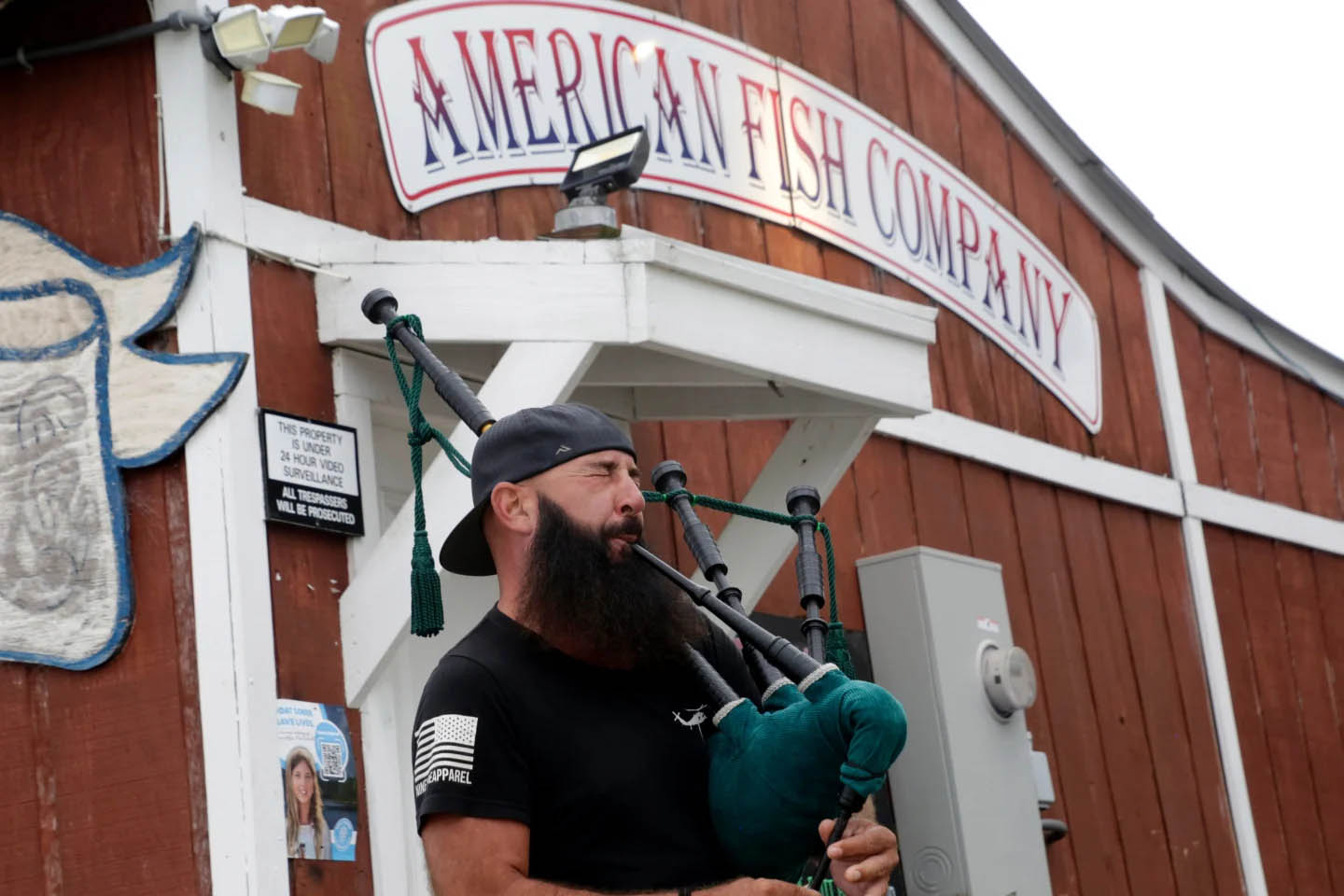Thought of the Day

A great pleasure in life is doing what others say you can’t.


A great pleasure in life is doing what others say you can’t.

By DÁNICA COTO Associated Press
SAN JUAN, Puerto Rico (AP) — Authorities in the Bahamas closed most schools on Monday as Tropical Storm Imelda dropped heavy rain in the northern Caribbean, including over Cuba where two people died as a result of the storm.
The storm was located about 120 miles (190 kilometers) north of Great Abaco Island of the Bahamas, which is still recovering from Hurricane Dorian after it slammed into parts of the Bahamas as a devastating Category 5 hurricane in 2019.
Imelda had maximum sustained winds of 65 mph (100 kph) and was moving north at 9 mph (15 kph). It was forecast to become a hurricane on Tuesday morning and spin out to open ocean, according to the National Hurricane Center in Miami.
A tropical storm warning was in effect for parts of the extreme northwestern Bahamas, including Great Abaco, Grand Bahama Island and the surrounding keys. Power outages were reported in some areas, with authorities closing government offices on affected islands and issuing mandatory evacuation orders for some islands over the weekend.
Cuban Prime Minister Manuel Marrero said late Monday that two people died after Imelda impacted eastern Cuba. On his X account, Marrero said the two people died in Santiago de Cuba province, but he didn’t give any details.
Earlier, state media reported that 60-year-old Luis Mario Pérez Coiterio had died in Santiago de Cuba following landslides in that area.
In Santiago de Cuba, flooding and landslides cut off 17 communities, according to the official newspaper Granma. More than 24,000 people live in those communities.
In Guantánamo, another impacted province, more than 18,000 people have been evacuated, according to reports from the state-run Caribe television channel.
Imelda was expected to drop 4 to 8 inches (10 to 20 centimeters) of rain across the northwest Bahamas through Tuesday, and 2 to 4 inches (5 to 10 centimeters) across eastern Cuba.
Meanwhile, Hurricane Humberto, a Category 4 storm, churned in open waters nearby, which forecasters said would cause Imelda to abruptly turn to the east-northeast, away from the southeastern United States coast.
“This is really what’s going to be saving the United States from really seeing catastrophic rainfall,” said Alex DaSilva, lead hurricane expert for AccuWeather, a private U.S. weather forecasting company.
DaSilva said the two storms would draw closer and start rotating counterclockwise around each other in what’s known as the Fujiwhara effect.
“It’s a very rare phenomenon overall in the Atlantic basin,” he said.
Humberto had maximum sustained winds of 140 mph (220 kph). It was located about 295 miles (475 kilometers) southwest of Bermuda, moving north-northwest at 13 mph (20 kph). A hurricane watch was in effect for Bermuda.
“This is going to be no threat to the United States,” DaSilva said.
Moisture from Imelda was expected to move up the Carolinas, with heavy rain forecast through Tuesday morning. The heaviest rains will be limited to the coastline, from Charleston in South Carolina to Wilmington in North Carolina, while Charlotte and Raleigh might receive only 1 to 2 inches (3 to 5 centimeters) of rain, he said.
The Carolinas might see wind gusts of 40 mph, but only along the coastline, DaSilva said, as he warned of dangerous surf and heavy rip currents all week.
South Carolina Gov. Henry McMaster said authorities were prepositioning search and rescue crews over the weekend.
In North Carolina, Gov. Josh Stein declared a state of emergency even before Imelda formed, while authorities on Tybee Island off the coast of Georgia handed out free sandbags to residents.
Even though Imelda was not making landfall in Florida, its impact was still felt.
At the Loggerhead Marinelife Center in Juno Beach, crews found a couple of turtle hatchlings that rough surf had tossed ashore.
“We actually had two washbacks come in over the weekend,” said Justin Perrault, the center’s vice president of research. “We may get more as the day goes along.”
He said typically beachgoers will see a hatchling resting in the seaweed and call the center for help.
Farther south in Fort Lauderdale, Florida, Carl Alexandre exercised at the beach on Monday. He said he was grateful the storm was not heading toward South Florida, but that he would pray for those in the Bahamas.
“It’s great that we’re not having one as of right now,” Alexandre said. “And now we get to run in the Florida sun.”
Authorities in Bermuda hoped neither of the two storms would be a direct hit later in the week, though they were forecast to, at least, come close, with Imelda possibly passing within 15 miles (24 kilometers) as the season’s soon-to-be fourth hurricane, Da Silva said.
“It’s going to be a double whammy for Bermuda, Humberto first and Imelda following close behind,” Da Silva said.
Michael Weeks, Bermuda’s national security minister, urged residents to prepare, warning that there have been “some near misses this season regarding severe storms.”
“Hurricane Humberto is a dangerous storm, and with another system developing to our south, every household in Bermuda should take the necessary steps to be prepared,” he said.
Flights to and from the islands in the Bahamas were canceled, with airports expected to reopen after weather conditions improve.
___
Associated Press videographers Milexsy Durán in Havana, Cody Jackson in Juno Beach, Daniel Kozin in Fort Lauderdale, Florida and writer Jeff Martin in Atlanta contributed to this report.

NEW YORK (AP) — In what could become the largest-ever buyout funded by private equity, video game maker Electronic Arts has agreed to be acquired in a deal valued at $55 billion.
Beyond the potentially record-breaking price tag, the deal could bring wider shifts in the gaming world. Electronic Arts (EA) owns popular titles like Madden NFL, Battlefield and The Sims — and going private could potentially grant the company more freedom in developing and distributing future games. Still, what its future under new ownership could look like has yet to be seen.
The proposed buyout also marks the latest move from Saudi Arabia’s sovereign wealth fund PIF to invest in gaming. If the transaction gets the green light, PIF would join Silver Lake Partners and Affinity Partners, run by U.S. President Donald Trump’s son-in-law Jared Kushner, as EA’s new owners. The companies aim to close the all-cash acquisition by the first quarter of 2027.
Here’s what we know.
The size of the video game market has attracted significant investment from large investors in recent years. And analysts note that Redwood City, California-based EA brand and lineup of titles make it a popular acquisition target.
The proposed acquisition also arrives as competition grows. One of EA’s biggest rivals, Activision Blizzard, was snapped up by technology powerhouse Microsoft for nearly $69 billion in 2023, for example, while the competition from mobile video game makers such as Epic Games has intensified.
PIF, Silver Lake and Affinity’s combined offer to acquire EA far exceeds the $32 billion price tag to take Texas utility TXU private in 2007, which had previously shattered records for leveraged buyouts. A leveraged buyout means a company is purchased largely using borrowed funds, and requires the acquired company to repay the debt taken on to finance the deal.
It’s possible that the deal could give EA more freedom in future development and distribution of its games.
By going private, EA will be able to retool operations without worrying about shareholder interest or other market scrutiny. As a result, EA could get “a little bit more breathing room to do what they do,” explains Joost van Dreunen, a longtime games industry researcher and adjunct assistant professor at New York University’s Stern School of Business.
Theoretically, that could “result in more or better games,” adds Ben Schneider, a professor of practice in the Interactive Media and Game Development program at Worcester Polytechnic Institute. But at the same time, he notes, “gamers are generally not enthralled with corporate owners influencing how game makers make their games, to say the least.”
EA has recently faced criticism for moves toward live-service gaming — which features a continuous stream of new content often aimed to keep players online longer — and other monetization efforts that have been seen as aggressive among some gamers.
Experts like van Dreunen, who is also CEO of market research firm Aldora, say a hope is that the extra capital from privatization might allow EA “to take this foot off the gas from aggressive microtransaction strategies.”
Still, time will tell. EA’s proposed buyers haven’t indicated any plans to part from those models. In Monday’s announcement, company executives just pointed broadly to coming growth.
“Looking ahead, we will continue to push the boundaries of entertainment, sports, and technology, unlocking new opportunities,” Andrew Wilson, CEO of EA, who will continue to stay in the top seat if the go-private deal goes through.
Meanwhile, some analysts are skeptical about whether a buyout is the best thing for EA right now — particularly ahead of its “Battlefield 6” launch slated for October 10.
“It is still unclear to us why EA would agree to be acquired right before a very promising BF6 launch,” TD Cowen analysts Doug Creutz and Mei Lun Quach wrote in a Monday note. The analysts had previously pointed to the positive responses “Battlefield 6″ received from players in its testing period — noting that expected revenue could push up EA’s share price even further.
Others have similarly argued that the proposed acquisition price — which divvies up to $210 per share — undervalues what EA has to offer. But Nick McKay of Freedom Capital Markets thinks an increase in share price is likely limited, given the success of EA’s sports offerings being baked into the price, and that the pricing makes sense.
After being taken private, formerly public companies often undergo extensive cost-cutting.
EA hasn’t indicated any expected cuts spanning from its proposed buyout at this time, although the company has gone through several layoff rounds recently. After jettisoning about 5% of its workforce in 2024, EA ended March with 14,500 employees and then laid off several hundred people in May.
Experts like Schneider also point to the sizeable debt financing the deal takes on: amounting to about $20 billion per Monday’s announcement. He notes that’s concerning news for video game developers, as it could result in more cuts.
“These changes in ownership are a very far distance from the people and studios who actually make games,” Schneider said. “Any direct impact will come in the form of what budgets are given to those studios and, downstream, which projects get cancelled or greenlit.”
EA has also already shuttered many game studios over the years. Just this past May, the company reportedly canceled the development of a video game based on Marvel’s “ Black Panther,” for example, as part of the closure of Cliffhanger Games.
Among EA’s proposed buyers is Saudi Arabia’s sovereign wealth fund PIF — which has increasingly upped its gaming investments. It already holds a 9.9% stake in EA, and is also a minority investor in fellow gaming giant Nintendo.
Van Dreunen explains that gaming in popular with younger audiences and the majority of people living in the country are under 30 years old (accounting for 63% of the population as of the kingdom’s 2022 census). That helps drive demand in a tech-forward industry that can also be “easily transported into a new location,” he adds.
Amanda Cote, an associate professor and director of the serious games certificate at Michigan State University, notes that the attempted EA acquisition is particularly in line with PIF’s recent moves in esports, with competitive gaming platforms like ESL FACEIT also among its portfolio today.
“EA’s game portfolio simultaneously aligns with Saudi Arabia’s expansions into sports, gaming, and esports,” Cote said, alluding to EA’s esports and sports properties like Madden Football and EA Sports FC (formerly FIFA).
At the same time, she also noted human rights organizations, such as Amnesty International, have been highly critical of Saudi Arabia’s overall investments in sports and esports — with some accusing the nation of “sportswashing” to distract international attention. “This proposed deal is likely to face similar criticism,” Cote added.
Among the other notable names in the proposed buyout is Kushner.
The deal still needs shareholder and regulatory approval. Experts like van Dreunen expect there might be some regulatory pushback — perhaps not in the U.S., but from other consumer watchdogs globally.
Still, Baird Equity Research analysts noted Monday that the “connections to both the Saudi government and the Trump administration” may be “a strategic asset for EA in navigating any regulatory speed-bumps.”
_______
AP Business Writers Michael Liedtke and Michelle Chapman contributed to this report.

By ERIK VERDUZCO and GARY D. ROBERTSON Associated Press
CHARLOTTE, N.C. (AP) — U.S. House members visited North Carolina’s largest city on Monday to hear from family members of violent-crime victims who pleaded for tougher criminal justice policies in the wake of last month’s stabbing death of a Ukrainian refugee on a Charlotte commuter train.
A judiciary subcommittee meeting convened in Charlotte to listen to many speakers who described local court systems in North Carolina and South Carolina that they say have failed to protect the public and keep defendants in jail while awaiting trials.
The meeting was prompted by the Aug. 22 stabbing death of Iryna Zarutska on a light rail car and the resulting apprehension of a suspect who had been previously arrested more than a dozen times.
“The same system that failed Mary failed Iryna. Our hearts are broken for her family and her friends and we grieve with them,” Mia Alderman, the grandmother of 2020 murder victim Mary Santina Collins in Charlotte, told panelists. Alderman said defendants in her granddaughter’s case still haven’t been tried: “We need accountability. We need reform. We need to ensure that those accused of heinous crimes are swiftly prosecuted.”
A magistrate had allowed the commuter train defendant, Decarlos Brown Jr., to be released on a misdemeanor charge in January on a written promise to appear, without any bond. Now Brown is charged with both first-degree murder in state court and a federal count in connection with Zarutska’s death. Both crimes can be punishable by the death penalty.
Public outrage intensified with the release of security video showing the attack, leading to accusations from Republicans all the way to President Donald Trump that policies by Democratic leaders in Charlotte and statewide are more focused on helping criminals than victims. Democratic committee members argued that Republicans are the ones who have reduced crime-control funds or failed to provide funding for more district attorneys and mental health services.
“The hearing for me is not really about public safety,” Democratic Rep. Alma Adams, who represents most of Charlotte. “It’s about my colleagues trying to paint Democrats as soft on crime — and we’re not — and engaging in political theater, probably to score some headlines.”
Dena King, a former U.S. attorney for western North Carolina during Joe Biden’s administration, testified that Mecklenburg County, which includes Charlotte, needs dozens of additional prosecutors to cover a county of 1.2 million people. And a crime statistician said that rates of murder and violent crime are falling nationwide and in Charlotte after increases early in the 2020s.
Republicans, in turn, blasted Democratic members, saying additional funding wouldn’t have prevented the deaths of Zarutska or the other homicide victims highlighted Monday. And they attempted to question the crime figures as misleading.
“This is not time for politics. This is not time for any race. It’s not time of any party. It’s about a time of justice,” said GOP Rep. Ralph Norman of South Carolina, representing in part Charlotte’s suburbs. He spoke while holding a poster of a screenshot of the video showing Zarutska and her attacker. Adams protested Norman’s use of the placard.
In response to Zarutska’s death, the Republican-controlled North Carolina legislature last week approved a criminal justice package that would bar cashless bail in many circumstances, limit the discretion magistrates and judges have in making pretrial release decisions and seek to ensure more defendants undergo mental health evaluations. The bill now sits on Democratic Gov. Josh Stein’s desk for his consideration.
Committee Republicans also cited the need for more restrictive bail policies for magistrates and aggressive prosecutors not willing to drop charges for violent crimes.
Another speaker, Steve Federico, from suburban Charlotte, demanded justice for his 22-year-old daughter, Logan, who was shot to death in May at a home in Columbia, South Carolina, while visiting friends. The suspect charged in her killing had faced nearly 40 charges within the last decade, WIS-TV reported.
“I’’m not going to be quiet until somebody helps. Logan deserves to be heard,” Steve Federico told the representatives. “Everyone on this panel deserves to be heard. And we will — trust me.”
__
Robertson reported from Raleigh, North Carolina.

By MICHAEL LIEDTKE AND MICHELLE CHAPMAN The Associated Press
Electronic Arts, the maker of video games like “Madden NFL,” “Battlefield,” and “The Sims,” is being acquired for $55 billion in what could become the largest private equity-funded buyout in history.
Silver Lake Partners, Saudi Arabia’s sovereign wealth fund PIF, and Affinity Partners will pay EA’s stockholders $210 per share. Affinity Partners is run by President Donald Trump’s son-in-law, Jared Kushner.
The equity value of the deal is $55 billion, far exceeding the $32 billion price tag to take Texas utility TXU private in 2007, which had shattered records for leveraged buyouts.
PIF, which was currently the largest insider stakeholder in Electronic Arts, will be rolling over its existing 9.9% investment in the company.
The commitment to the massive deal is inline with recent activity in the gaming sector by Saudi Arabia’s sovereign wealth fund, wrote Andrew Marok of Raymond James.
“The Saudi PIF has been a very active player in the video gaming market since 2022, taking minority stakes in most scaled public video gaming publishers, and also outright purchases of companies like ESL, FACEIT, and Scopely,” he wrote. “The PIF has made its intentions to scale its gaming arm, Savvy Gaming Group, clear, and the EA deal would represent the biggest such move to date by some distance.”
PIF is also a minority investor in Nintendo.
If the transaction closes as anticipated, it will end EA’s 36-year history as a publicly traded company that began with its shares ending its first day of trading at a split-adjusted 52 cents.
The IPO came seven years after EA was founded by former Apple employee William “Trip” Hawkins, who began playing analog versions of baseball and football made by “Strat-O-Matic” as a teenager during the 1960s.
CEO Andrew Wilson has led the company since 2013 and he will remain in that role, the firms said Monday. Electronic Arts would be taken private and its headquarters would remain in Redwood City, California.
“Electronic Arts is an extraordinary company with a world-class management team and a bold vision for the future,” said Kushner, CEO of Affinity Partners. “I’ve admired their ability to create iconic, lasting experiences, and as someone who grew up playing their games – and now enjoys them with his kids – I couldn’t be more excited about what’s ahead.”
The size of the video game market has attracted large investors in recent years.
One of EA’s biggest rivals Activision Blizzard was snapped up by technology powerhouse Microsoft for nearly $69 billion in 2023, while the competition from mobile video game makers such as Epic Games has intensified.
This marks the second high-profile deal involving Silver Lake and a technology company with a legion of loyal fans in recent weeks. Silver Lake is also part of a newly formed joint venture spearheaded by Oracle involved in a deal to take over the U.S. oversight of TikTok’s social video platform, although all the details of that complex transaction haven’t been divulged yet.
Silver Lake also bought out two other well-known technology companies, the now-defunct video calling service Skype in a $1.9 billion deal completed in 2009, and a $24.9 billion buyout of personal computer maker Dell in 2013. After Dell restructured its operations as a private company, it returned to the stock market with publicly traded shares in 2018.
By going private, EA will be able to retool operations without worrying about market reactions. Although its video games still have a fervent following, EA’s annual revenues have been stagnant during the past three fiscal years, hovering from $7.4 billion to $7.6 billion.
Mike Hickey of The Benchmark Company thinks the proposed deal’s $210 per share offer price may be falling short of EA’s intrinsic value.
“With Battlefield 6 about to launch and a pipeline that could add more than $2B in incremental bookings by FY28, the true earnings power of EA is only beginning to emerge,” he wrote.
Hickey is unsure if the transaction is in shareholders’ best interest.
“In our view, this transaction is a self-serving, opportunistic move by management and the investor group,” he wrote. “Management has long been rumored to seek a sale around $200 per share, a level that may have been defensible in prior years but not in the current environment where visibility into growth, franchise momentum, and pipeline strength is far more robust. The board’s decision to recommend a sale at $210 per share suggests a prioritization of near-term certainty and legacy over maximizing long-term shareholder value.”
But Nick McKay of Freedom Capital Markets believes the offer makes sense for EA because share price appreciation is likely limited given that the success of its sports franchises and various live services streams are already mostly baked into the stock.
“The financial backing and resources of the investor consortium should enable EA to increase its focus on long-term growth opportunities that may have been viewed as too risky or expensive as a public company,” he wrote in an analyst note.
EA shares, which rose nearly 5% on Monday, had jumped 15% on Friday after rumors of a takeover began to circulate.
The deal is expected to close in the first quarter of fiscal 2027. It still needs approval from EA shareholders.

By CAROLYN THOMPSON and ALLEN G. BREED Associated Press
A man charged with firing an assault rifle from a boat at patrons of a North Carolina waterfront bar, killing three people and wounding five others, was a decorated Marine combat veteran and Purple Heart recipient whose last assignment was with a Wounded Warrior battalion.
Nigel Edge, 40, is scheduled to appear in a North Carolina courtroom Monday after being charged with murder, attempted murder and assault in connection with a mass shooting Saturday night at the American Fish Company in Southport, a historic port town about 30 miles (48 kilometers) south of Wilmington.
Five people remained hospitalized Monday. None of the victims’ identities have been released.
Authorities said Edge piloted a boat close to shore, stopped briefly and opened fire at a crowd of vacationers and other patrons in what Police Chief Todd Coring called a “highly premeditated” targeted attack.
He was arrested about a half an hour later after a U.S. Coast Guard crew spotted him pulling a boat from the water at a public ramp on Oak Island, where he lives.
North Carolina State Bureau of Investigation Director Chip Hawley said at a news conference Monday that law enforcement officers “got the confession” from the suspect. He did not elaborate.
It was not immediately known whether Edge has a lawyer who can speak on his behalf. He was scheduled to appear in a Brunswick County courtroom Monday afternoon.
Edge, who was born in Suffern, New York, and changed his name from Sean DeBevoise in 2023, told police he was injured in combat and suffers from post-traumatic stress disorder, Coring said.
Oak Island Chief Charles Morris said he was known to officers who frequently saw him by the town pier, and that Edge had filed “numerous lawsuits” against the department and town in recent years. In one, he sought body camera video from an encounter after his boat trailer was vandalized.
Legal records indicate Edge had turned to the court system in recent years to air a variety of perceived grievances.
Among a number of recent local and federal lawsuits, court records show, is one filed May 12 in which he accused an area church of trying to make him commit suicide because “he is not LGBQT or a pedophile.”
In another, in 2024, he made numerous claims against his parents, including that they’d falsified a birth certificate “for a feral child.”
“Plaintiff suffers from war injuries and he suffers from delusions and PTSD. The VA needs to take care of him!!!” his mother, Sandra Lynn DeBevoise, wrote in response.
The DeBevoises could not be reached for comment Monday. Telephone listings could not be located.
In his petition to change his name, he gave this reason: “There have been alot (sic) of events in my life that I don’t understand. Therefore I do not trust my family, and I would feel more comfortable starting my life in a new path with a new name.”
Edge served in the military from 2003-2009, achieving the rank of sergeant in 2007, according to military records, which list his specialties as assault man and reconnaissance man. He had deployments in 2005 and 2006 as part of Operation Iraqi Freedom and was awarded a Purple Heart, a medal given to those wounded or killed in action. Other awards include a Marine Corps Good Conduct Medal, Combat Action Ribbon (Iraq) and Iraq Campaign Medal with two bronze stars, which denote time spent in Iraq.
His last duty assignment was with Wounded Warrior Battalion East, II Marine Expeditionary Force in Camp Lejeune, records show.
Details of his injuries were not released. A 2017 news story in the Wilmington Star-News described DeBevoise as a Marine sniper who said he’d been left for dead after being shot four times, including in the head, during a raid on a warehouse in Iraq in May 2006. The story detailed his efforts to raise money to start a commercial fishing business.
A 2012 post on singer Kellie Pickler’s X account appears to show her with a picture of the suspect in a Marine uniform at the Country Music Awards. The photo, first reported by the New York Post, was captioned: “Me and my date (Sgt Sean Debevoise).”
Pickler could not be reached for comment.
Gov. Josh Stein said the weekend shootings were further proof of the need for improvements to “fix our broken mental health care system.”
“We know that the vast majority of folks with mental health challenges pose no risk to others, but some can,” Stein said. “There are too many people in our communities with dangerous obsessions exhibiting threatening behavior who do pose risks.”
The North Carolina legislature passed a criminal justice reform bill last week in the wake of the stabbing death of a Ukrainian refugee on a Charlotte commuter train that in part includes a greater emphasis upon defendants who need mental health examinations. Stein hasn’t yet said whether he’d let the bill become law or veto it.
The legislation lacks a “red flag” law pushed by Democrats for years that would allow a judge to take guns away from a person whom a judge has found to be a grave risk to the community. Stein said he thinks such a law is a good idea, although he didn’t know whether it would have been triggered in this case.
___
Breed reported reported from Raleigh, N.C. Thompson reported from Buffalo, N.Y. Gary Robertson contributed from Raleigh, N.C.

By DÁNICA COTO Associated Press
SAN JUAN, Puerto Rico (AP) — Authorities in the Bahamas closed a majority of schools on Monday following mandatory evacuations for some islands in the archipelago as Tropical Storm Imelda was expected to drop heavy rain and unleash flooding in the northern Caribbean.
The storm was located about 10 miles (15 kilometers) southeast of Great Abaco Island, which is still recovering from Hurricane Dorian after it slammed into parts of the Bahamas as a devastating Category 5 hurricane in 2019.
Imelda had maximum sustained winds of 50 mph (85 kph) and was moving north at 9 mph (15 kph). It was forecast to become a hurricane on Tuesday and spin out to open ocean, according to the National Hurricane Center in Miami.
A tropical storm warning was in effect for parts of the northwestern Bahamas, including Eleuthera, the Abacos, Grand Bahama Island and the surrounding keys. Power outages were reported in some areas, with authorities closing government offices on affected islands.
Imelda was expected to drop 4 to 8 inches (10 to 20 centimeters) of rain across the northwest Bahamas through Tuesday, and 2 to 4 inches (5 to 10 centimeters) across eastern Cuba.
Meanwhile, Hurricane Humberto churned in open waters nearby, which forecasters said would cause Imelda to abruptly turn to the east-northeast, away from the southeastern United States coast.
“This is really what’s going to be saving the United States from really seeing catastrophic rainfall,” said Alex DaSilva, lead hurricane expert for AccuWeather, a private U.S. weather forecasting company.
When two storms circle near each other, they create what’s known as the Fujiwhara effect, which means that they start to rotate counterclockwise around each other, DaSilva said.
“It’s a very rare phenomena overall in the Atlantic basin,” he said.
Humberto was a Category 4 storm with maximum sustained winds of 145 mph (230 kph). It was located about 365 miles (585 kilometers) south-southwest of Bermuda moving northwest at 14 mph (22 kph). A tropical storm watch was in effect for Bermuda.
“This is going to be no threat to the United States,” DaSilva said.
However, moisture from Imelda was expected to move up the Carolinas, with heavy rain forecast through Tuesday morning. The heaviest rains will be limited to the coastline, from Charleston in South Carolina to Wilmington in North Carolina, while Charlotte and Raleigh might receive only 1 to 2 inches (3 to 5 centimeters) of rain, he said.
The Carolinas might see winds gusts of 40 mph, but only along the coastline, DaSilva said, as he warned of dangerous surf and heavy rip currents all week.
South Carolina Gov. Henry McMaster said authorities were prepositioning search and rescue crews over the weekend.
Meanwhile, In North Carolina, Gov. Josh Stein declared a state of emergency even before Imelda formed.
As Tropical Storm Imelda and Hurricane Humberto swirled in open waters, authorities in Bermuda prepared for two near misses.
“It’s going to be a double whammy for Bermuda, Humberto first and Imelda following close behind,” Da Silva said.
He said Imelda could pass within 15 miles (24 kilometers) from Bermuda as the Atlantic season’s soon-to-be fourth named hurricane, while Humberto will charge past at a longer distance.
Michael Weeks, Bermuda’s national security minister, urged residents to prepare, warning that there have been “some near misses this season regarding severe storms.”
“Hurricane Humberto is a dangerous storm, and with another system developing to our south, every household in Bermuda should take the necessary steps to be prepared,” he said.
Flights to and from the islands in the Bahamas were canceled, with airports expected to reopen after weather conditions improve.

CHARLOTTE, N.C. (AP) — Airplane maintenance workers at a North Carolina airport found the body of a suspected stowaway in the landing gear compartment of an American Airlines flight that had recently arrived from Europe, police said.
The body was found Sunday morning while the plane was undergoing maintenance at Charlotte Douglas International Airport. The Charlotte-Mecklenburg Police Department said in a statement that it is investigating the death.
Neither the airline nor police have offered information about the person who died, including a possible cause of death, or said where the flight originated.
The airport said it was deeply saddened by the discovery and said it will support the police investigation. American Airlines said it was working with law enforcement on its investigation and directed questions to police.
Experts believe roughly three-quarters of stowaways do not survive if they hide on a plane’s undercarriage because of the extreme cold and lack of oxygen they experience as the plane reaches cruising altitude.
In January, two bodies were found in the landing gear compartment of a JetBlue aircraft at Fort Lauderdale-Hollywood International Airport. The bodies were discovered in the wheel well area during a routine post-flight inspection. The aircraft had arrived in Fort Lauderdale shortly after flight from John F. Kennedy International Airport in New York. The jet had been in both Kingston, Jamaica, and Salt Lake City, Utah, earlier that day.
In December, a body was found in the wheel well of a United Airlines plane after it landed in Maui from Chicago.

This recipe is a delicious addition to any fall meal. It’s quick, easy, and a great way to get some veggies in–and you can customize the seasoning to be sweet, savory, or both!
1. Preheat oven and prep
Preheat oven to 400°F and prep a baking sheet with parchment paper.
2. Season the carrots
Toss the carrots in a bowl with the olive oil, salt, pepper, brown sugar, red pepper flakes and any other seasoning of your choice.
3. Bake
Spread the seasoned carrots on a baking sheet in a single layer and bake in the preheated oven for 20-25 minutes, flipping halfway through.
4. Enjoy
Enjoy as a side with your favorite fall dinner!


The desire of love is to give. The desire of lust is to get.